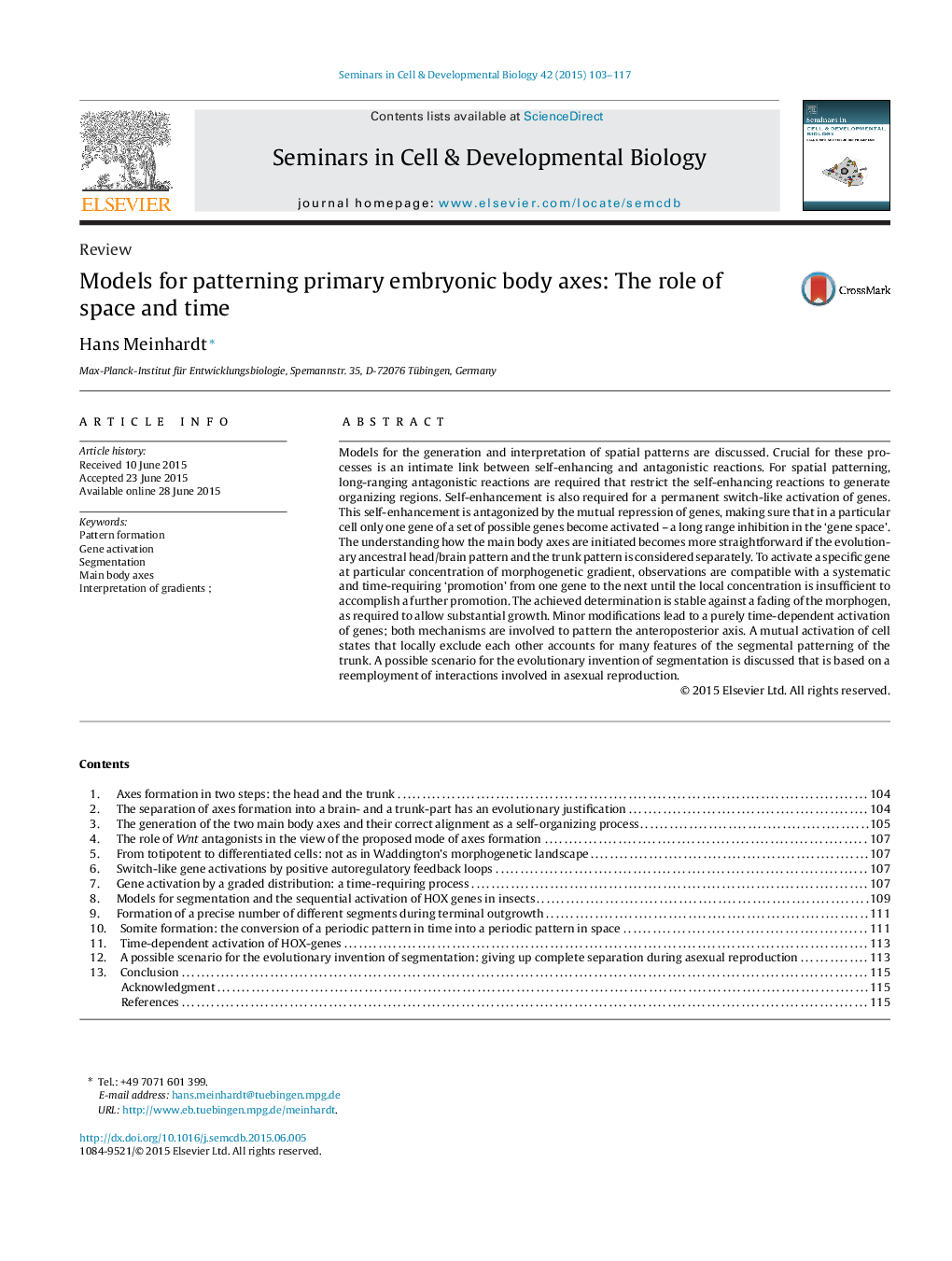| کد مقاله | کد نشریه | سال انتشار | مقاله انگلیسی | نسخه تمام متن |
|---|---|---|---|---|
| 2202566 | 1551380 | 2015 | 15 صفحه PDF | دانلود رایگان |
Models for the generation and interpretation of spatial patterns are discussed. Crucial for these processes is an intimate link between self-enhancing and antagonistic reactions. For spatial patterning, long-ranging antagonistic reactions are required that restrict the self-enhancing reactions to generate organizing regions. Self-enhancement is also required for a permanent switch-like activation of genes. This self-enhancement is antagonized by the mutual repression of genes, making sure that in a particular cell only one gene of a set of possible genes become activated – a long range inhibition in the ‘gene space’. The understanding how the main body axes are initiated becomes more straightforward if the evolutionary ancestral head/brain pattern and the trunk pattern is considered separately. To activate a specific gene at particular concentration of morphogenetic gradient, observations are compatible with a systematic and time-requiring ‘promotion’ from one gene to the next until the local concentration is insufficient to accomplish a further promotion. The achieved determination is stable against a fading of the morphogen, as required to allow substantial growth. Minor modifications lead to a purely time-dependent activation of genes; both mechanisms are involved to pattern the anteroposterior axis. A mutual activation of cell states that locally exclude each other accounts for many features of the segmental patterning of the trunk. A possible scenario for the evolutionary invention of segmentation is discussed that is based on a reemployment of interactions involved in asexual reproduction.
Journal: Seminars in Cell & Developmental Biology - Volume 42, June 2015, Pages 103–117
